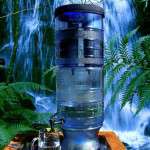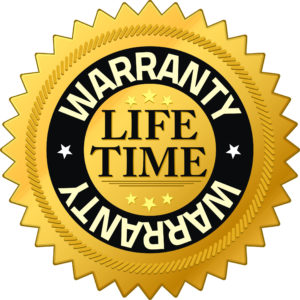 Recently, I read an article on a blogger’s site that mentioned the Berkey® Water Purification and Seychelle® filtration systems, as well as another filtration system. Some points in that article that need clarification, especially since such generalities as stated in that article are lacking in reason and practicality. It is vital for individuals to offer information that is clear and practical, especially to the communities whose interests we share. When critics publicly address the Berkey® Systems, it is only fair to respond in a similar fashion. We hold a vested interest in providing correct information, especially when implications murky the water, directly/indirectly. The bullet points are direct quotes from the article. Our responses follow the bullet points.
Recently, I read an article on a blogger’s site that mentioned the Berkey® Water Purification and Seychelle® filtration systems, as well as another filtration system. Some points in that article that need clarification, especially since such generalities as stated in that article are lacking in reason and practicality. It is vital for individuals to offer information that is clear and practical, especially to the communities whose interests we share. When critics publicly address the Berkey® Systems, it is only fair to respond in a similar fashion. We hold a vested interest in providing correct information, especially when implications murky the water, directly/indirectly. The bullet points are direct quotes from the article. Our responses follow the bullet points.
- Having an abundance of water available for future challenges is meaningless without having reliable methods of water filtration for any of that water you’d use…
Personally, I have quite a bit of emergency water on-hand and this statement is a generality that is simply untrue. Having lots of water is not meaningless. Even if you only had pool water available (which should not be used for drinking water), that amount of water is absolutely useful and valuable for other applications such as washing clothes, dishes, rinsing surfaces, etc.
I store my drinking water in 55 gallon containers that are unused. I purchased them new from a wholesaler who buys directly from the manufacturer, Contico. Although I pre-treat the stored water, I know that the water will be safe to drink even if I am unable to use my Berkey® systems to optimize the water.
- Test results need to identify the initial baseline of invaders before its results can be relied on.
Let’s address bacteria as the author makes specific reference to this in her example. A common misconception held by many individuals is that all bacteria are “bad”. Pathogenic (illness-causing) bacteria and microorganisms are the “invaders” that you want to avoid in your water, food, and simple day-to-day living. The presence of coliform bacteria in your water source is not a fail-safe indicator of pathogens.
Routine testing methods emphasize the testing for indicator rather than pathogenic microbes. In fact, lab testing generally relies on the presence of indicator organisms (organisms whose presence might indicate the presence of pathogenic bacteria as well) to suggest the presence of pathogens. Even so, if the counts of indicator organisms are low, that indicates a low to non-present likelihood of disease-causing bacteria in the sample. By the way, bacteria are usually on the scale of millions and not hundreds.
The author then references her experience with a Berkey® representative and states that he kept referring to the red food coloring test. The manufacturer New Millennium Concepts, Ltd., specifically uses the red food coloring test because of the unique ability of their systems to remove the red color from the water, whereas no other system that compares itself directly with the Berkey® is able to do the same. The red food coloring also assists users to determine whether their Black Berkey® Elements are functioning properly or need replacement.
Berkey® Water Purification Systems have been a well-known brand within this category for more than a decade and have used the term “non-detectable levels” since their start. Lab data has been referenced by the manufacturer for many years now, although many newcomers are just now becoming informed.
- Avoid any water filtration unit which uses the term “up to” as a part of its marketing and technology content.
Again, an inaccurate reference is made here. Berkey® Systems make specific mention to “pathogenic bacteria, cysts, and parasites” and do so specifically: >99.9999%. The bundling of the Berkey® Systems in with statements of other manufacturers is inaccurate, misrepresentative, and misleading. And for those who have suffered a “miserable recovery from a digestive illness,” please research Louis Pasteur’s words in context to your illness: “Bernard avait raison. Le germ n’est rien, c’est le terrain qui est tout.” Translation from French: “Bernard was correct. The germ is nothing; the terrain is everything.”
- The filtration and treatment tests must take into consideration the SIZE of the invaders they are attempting to eliminate.
Personally, I like New Millennium’s statement (link paragraph titled “What is the Micron Rating of the Black Berkey® purification elements?”) on this particular point, made a few years ago:
With respect to the micron rating, we do not use or publish a micron rating for the Black Berkey® elements for the following reasons:
There is much confusion with respect to nominal and absolute micron ratings. An absolute micron rating is one that states the maximum pore size expected within an element. The nominal micron rating is the average pore size within the element. This means that if 90% of the pores are .02 microns and ten percent are 2.0 microns, one could claim the nominal micron rating as 0.2 microns, which would imply that pathogenic bacteria and parasites would be totally removed. But in reality the bulk of the water would channel through the larger 2-micron pores and thereby allow both bacteria and parasites to pass through. Therefore a nominal micron-rating claim can be very misleading.
With respect to the absolute micron rating, there is also confusion because there are two different standards to determine absolute; in the US the standard is 99.9% removal, but the international standard in 99.99% removal or 10 times greater removal.
Clever marketers of products can use the confusion over the above differences to make product “A” appear to be better than product “B” when product B may be far superior in reality. For example, we used to report an absolute rating using the international standard because we have a large international customer base. Several years ago we published a rating on our ceramic filters. A particular company began to publish that our elements were .9 microns whereas theirs were .2 microns. However, our micron rating was based on absolute (international) while theirs was based on a nominal (US) rating. When tested at Spectrum Labs, it was found that at the 0.2 to 0.3 microns range our filter removed more particulate than the other brand. Unfortunately, many people make their purchasing decisions based on a micron rating that can be legitimately distorted and to a significant degree.
We soon became weary of trying to explain the above to our customers and so we decided not to participate any longer in publishing a micron rating. Rather, we think an absolute pathogenic bacteria removal rate is a far better gauge because it is far more difficult to abuse. Based on that criterion, the Black Berkey® elements remove greater than 99.9999999% of pathogenic bacteria such as E.coli. To our knowledge, no other personal filtration element can match that capability. In fact, the Black Berkey® elements are so powerful, they are unique in their ability to mechanically remove red food coloring from water.
- Sure it cleans the water, but how long do I have to wait?! It’s all about the contact time.
It is no revelation that contact time is one of the key operating principles behind the success of the Black Berkey® Purification Elements! Of course, the proprietary media which is impregnated into the coconut-shell carbon of the Black Elements is also at work in addressing the contaminants, as well as the amount of carbon used in the elements themselves.
We're definitely looking forward to reading the second part of that author's post.
-TBG







I read both the original article and this with a great deal of interest since I too, have been confused by rather vague references to the ultimate purity of filtered water. To add to the confusion, a recent article on Consumer Reports indicates that water (including filtered water) should not be left unrefrigerated for any period of time.
Here is a quote:
“Trouble is, a water-filled carafe can become a breeding ground for microorganisms when left at room temperature. The bacterial growth may or may not be visible, for example occurring in the spout of the carafe, or hidden away in the filter. While not all waterborne microorganisms pose a health risk, without knowing which ones are breeding, drinking left-out water is not a good idea. If you prefer warm water, you’re better off pouring a glass and letting it sit at room temperature for a few minutes.”
I hope you will continue to clarify and educate us on this matter. It is important.
Gaye
Seems you are a representative taking care of his/her clients..thanks for the come-back..as I read your rebuttal last.
I have a Berkey and feel confident if they were used in Haiti by Alex Jones and his crew–they’re gonna do the job for me.
Incidentally, your company’s prompt service is commendable also.
Peace.